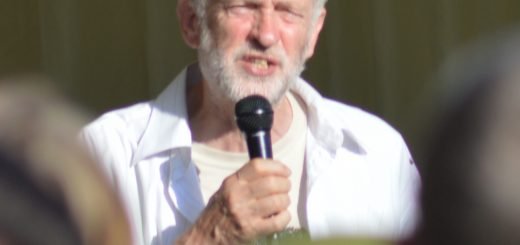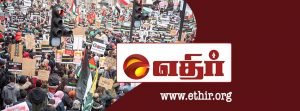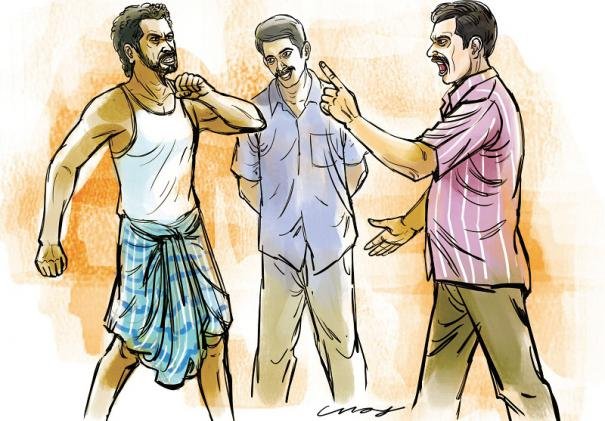Myanmar movement against military coup faces critical moment
The call for a second general strike in Myanmar, on Monday 8 March, was confronted with a brutal clampdown by the military. According to reports, at least two protesters were shot dead by the military, which conducted overnight raids to arrest many leading activists and union leaders. Despite these ruthless attacks by the military, protesters have established barricades and are determined to carry on.
The call for a full and extended shutdown of the economy was totally implemented in many parts. Dockers, railway workers, who blocked the rail tracks, and industrial workers, made sure that the shutdown was strong. This and the general strike that took place on 22 February in Myanmar demonstrate the deep anger that exists among workers and all sections of society against the military coup that took place on 1 February.
This general strike involved workers from all sectors. Small-scale business also shut and the protesters joined force. Now the military (Tatmadaw) has stepped up the attacks against protesters. Despite the attacks and shooting with live bullets, protesters continue to defy the military and the enforced regulations used during the Covid pandemic. So far, more than 50 protesters have been killed and many injured.
Myanmar has the highest rate of Covid infection among East Asian countries with over 150,000 cases and over 3,200 deaths, so far. While no adequate measures were taken to control Covid, the military used the situation to implement draconian measures, including three-year prison sentences for those breaking the restrictions. These regulations also aided the military to carry out what is now called the ‘Covid Coup’.
The military tops claimed ‘election fraud’ as a reason for the takeover. The election was not fully democratic, many minorities were excluded, but the military acted because the vote showed their weak support. There were reports of internal crisis within the military, and tension increased following the significant defeat in November’s general election for the military-backed Union Solidarity and Development Party (USDP). Though the National League for Democracy (NLD), led by Aung San Suu Kyi, won the majority of seats (440 out of 476) there were also widespread accusation of election fraud and rigging, which the military used its excuse to wage the coup. (You can find more information here – Army coup in Myanmar – For a workers’ led struggle for democracy and socialism! | (socialistworld.net)
The military chiefs have now announced that they will arrest all activists who are still protesting and have started to break up protests using tear gas and live bullets. Protesters have, so far, defied these brutal attacks and continued to mobilise; however, it is not clear how long they can sustain this as the military offensive against the protesters is increasing. The Tatmadaw has committed brutal massacres and atrocities against the population thorough out history. The Tatmadaw’s role in the genocidal slaughter of the Rohingya people is also widely known. Chief military personnel also control parts of the economy. The military establishment is rife with war criminals, looters and corrupted individuals. Despite this, they still maintain a support base among some sections of society, particularly those who rely on military support in the conflict areas. This section is now being mobilised to wage counter-protests. These goons go on rampages attacking protesters with the military backing them up.
The military has collaborated with Buddhist chauvinist forces in the past while they committed atrocities against minorities. Some leading monks of the Theravada version of Buddhism (prominent in Myanmar and Sri Lanka) propagate extreme violence against anyone who opposes them. The Arakan National Party (ANP) leaders who are Buddhists, landlords, and right-wing nationalists have now linked with the military. This party won a majority of the seats in the 2015 election in Rakhine state. Their electoral support was however challenged by the NLD through various measures, including repressive measures taken against these nationalists (Aung San Suu Kyi was reported to have said that she would “crush” the Arakan insurgents). The 15-member body formed by the military with General Min Aung Hlaing as its head after the coup – named the state administrative council – includes five members from the ANP.
However, the movement against the coup has now drawn in wider numbers involving the various ethnic minorities, including the Rohingya people. Sections of the protesters have also begun to acknowledge the past crimes that have been committed against the minorities.
Ethnic minorities
There are over 100 different ethnic minorities living in Myanmar. The country is also sharply divided along religious lines. Ever since the so-called ‘return to democracy’, the Aung San Suu Kyi led-NLD made no effort to meet the demands of the minority populations. Not only did the NLD share power with the military, but it also defended the atrocities committed by them, most openly when Aung San Suu Kyi spoke at the International Court of Justice in December 2019.
Aung San Suu Kyi’s role in hiding the real truth in relation to the Rohingya people resulted in damage to her reputation as a ‘human rights defender’. She was promoted as a defender of democracy by the capitalist west and the media in the past. Aung San Suu Kyi’s opposition to military rule does not mean that she championed democratic rights and better conditions, for all, especially the 30% of the population who are ethnic minorities. She and her party have never delivered on improving rights or conditions for the majority of the population during the years they were in government. Instead, many attacks against workers’ rights were carried out. Even the cybersecurity bill that allows the military to imprison (up to three years) anyone who organise protest online was drafted and implemented by Aung San Suu Kyi and her government.
Aung San Suu Kyi and the NLD do not have support among the minority population. Hence, the NLD was happy to agree to not hold the election in places where minorities lived. Representatives of the minorities, such as candidates on behalf of the Rohingya people, were prevented from standing in the election. In effect, over two million people were not involved in the election process. It is this lack of trust and inaction of the NLD that maintains the support base for the military.
Major protests did not develop immediately following the arrest of NLD leaders. This was due to fear that existed against the military, but also there was a lack of enthusiasm to defend the leaders of NLD who had been collaborators with the junta in the past. However, it was through the brave actions taken by health workers and other public servants that the masses have begun to gain the confidence to mobilise on the streets. Various unions, including the main union federation, quickly joined the fight, setting up the Civil Disobedience Movement (CDM). This eventually led to a general strike that united the opposition even further. The formation of a General Strike Committee of Nationalities (GSCN) brought together 27 different ethnic groups.
However, the movement now faces a critical moment. The hope that existed among sections of people in relation to the west and the so-called “international community” has been diminishing. Crocodile tears of the western capitalist countries produced zero results.
The Chinese government, which maintains direct links with all political parties and the Tatmadaw, provided all the support for the regime including sending a team of experts to block and control the internet and social media. They also put up a firewall against any condemnation agreed at the United Nations Security Council.
China’s role
In the recent past, the Chinese regime made significant investments in Myanmar, as part of their ‘Belt and Road Initiative’. Though the Chinese investment initiated under the military, it was under the NLD government that the China-Myanmar Economic Corridor (CMEC) developed further. Following the so-called ‘political reform’ that started in 2011 under the Thein Sein government, a number of Chinese contracts were cancelled citing ‘opposition’ from the population. But the election of the NLD in 2015 led to a change in this position as its leaders actively promoted Chinese investment. Hydroelectric dam-building worth more than $3.6bn, in addition to Sino-Myanmar oil and gas pipelines, and a copper-mining project were some of the Chinese-controlled projects that caused controversy and were promoted by the NLD government. It is this geopolitical situation that led to the west highlighting the Rohingya massacre – and the eventual conviction for genocide at the International Court of Justice at The Hague. However, no action was taken against the NLD government or the military. China, which was directly involved in the Rohingya negotiations, now argues that others “should not interfere in the internal matters” of Myanmar.
General Min Aung Hlaing, who was reported as having met the Chinese authorities prior to the coup, has announced that they have the support of the Chinese. However, it is much more complicated as the Chinese also maintained closed ties with the NLD. The Chinese regime would prefer the previous arrangement, where the NLD is in power with the military and there is a thin veneer of democracy, to maintain their regional interests. It has now emerged that the junta is also making deals with Russia that includes military contracts and obtaining the Russian-produced Covid vaccine. Russia not only defended the coup but has gone even further, asking the west to provide “practical assistance to the new authority of Myanmar to fulfil their obligations, including in the field of human rights”. These countries also blocked any condemnation of the coup at the United Nations Security Council recently.
The involvement of other regimes in the region, which also face opposition, such as Thailand, will not bring about the end of the junta’s rule in Myanmar. The western capitalist governments, on the other hand, are only motivated by their own interests and their own rivalry against China and Russia. These governments do not defend democratic rights when their interests are not challenged, for example in Saudi Arabia, India or Turkey where authoritarian regimes carry out gross human rights violations. India carried out a forceful return of Rohingya. Not so surprisingly, the military thinks it can ‘convince’ the west that it was the NLD and Aung San Suu Kyi who took Myanmar into China’s sphere of influence’ and hired a Canadian PR firm to do the job.
With all these factors keeping the military’s grip on power strong, the developing movement faces a bigger question than what it seems from outside: i.e. the simple return to rule by the NDP. The NDP’s attempt to ‘balance’ between these competing forces has now blown up in their faces. These factors along with repression can, for a time in the future, create a feeling of powerlessness that can demobilise the masses allowing the continuation of the military regime. But the masses have already shown enormous strength in the powerful general strikes. It is evident in the movement that workers’ involvement has helped to develop it further. Like we saw in other mass movements across the world, we also saw marvellous organising aspects emerge, such as coming together to organise medical and food aid, and taking security measures, etc.
However, this alone will not be enough. Workers’ councils in workplaces need to be set up and brought together to create a power base outside the walls of the institution that the military is currently occupying. The movement should also appeal to the rank-and-file police and ordinary soldiers to join forces in opposition. Solidarity should also be extended and requests should be sent to join forces with the mass movements that are taking place in the other countries in the region such as Thailand and Hong Kong. Chinese and Russian workers also suffer at the hands of repressive regimes. Appealing to them to rise and link up with the workers’ organisations and movements that are developing in the west and across the world is the best way to strengthen the movement for democracy.
Demands have now developed further than the simple demand for the release of NLD leaders and all detained oppositionists. Now the demand for changing the constitution altogether has also emerged strongly. The current Myanmar constitution enacted under military rule in 2008 gives enormous authority and power to the military. A quarter of parliamentary seats and the key ministries (home affairs, defence, border affairs) are automatically allocated to the military. However, this demand to change the constitution raises the question of what will replace it and who will be in charge of that.
Workers’ independence needed
The workers’ movement needs to defend its independence. Struggling against the coup cannot mean political support for the NLD leaders; rather it is a fight for democratic rights. Demanding a civilian government should not mean forming a coalition with the NLD. The workers’ movement needs to fight both for democratic rights and for the interests of the working people and poor.
The development of a mighty mass movement would raise the question of who should replace the military. Many will now support returning Aung San Suu Kyi and the NLD but, while opposing military rule, socialists would argue that no trust can be put in those who, until now, was publicly defending the military elite. Instead, calls for a revolutionary government of representatives of the working people and poor that can properly defeat the coup, remove the plotters and allow a democratic decision to be made on the country’s future.
The demand for establishing a revolutionary constituent assembly can play a vital role in this struggle. Democratically elected representatives from all constituent parts of the country can come forward to discuss the future that they want to create for themselves. This links the question of guaranteeing all democratic rights, including the right to self-determination of ethnic minorities. However, this task cannot be left in the hands of the representatives of the capitalists or the landlord class who have a history of collaborating with repressive regimes. The working class taking the leading role will be the key and arguing for a socialist alternative. Under a workers’ government, a genuine socialist confederation of Myanmar can be created. Of course, the task will not stop there. The implementation of a socialist, planned economy will be vital not only to secure these rights but also to take society forward. For the movement to succeed, these ideas should be discussed, debated and adopted.
The CWI appeals to anyone interested in establishing links with us to discuss these ideas.
Myanmar movement against military coup faces critical moment


















